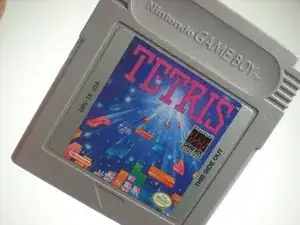
How to clean a Game Boy Cartridge
These are some common tools used to work on this device. You might not need every tool for every procedure.
The GameBoy cartridge is a plastic case that contains a circuit board and a ROM chip as well as a connector that allows it to interact with the GameBoy console itself. The ROM (which stands for Read-Only Memory) chip stores the information needed to run the specific game that the cartridge is dedicated to. ROM cartridges were helpful because they allowed the user to quickly load programs without an expensive floppy drive, or the more unreliable Compact Cassette tape. Nintendo released several consoles that use cartridges, including the original NES (Nintendo Entertainment System), the Game Boy and its variations, and the DS series.
The phenomenon of taking a cartridge or other component out of the main device and blowing on it to fix it actually originated with Nintendo cartridges! Whenever a game refused to load, the secret solution (much like ‘turn it off and then on again’) was to remove the cartridge, blow on the contact points, and replace it. Although this runs the risk of rusting the contact points, and an informal study has stated that it probably didn’t really help, the practice was widespread across owners of cartridge-based consoles like the GameBoy. Over one thousand games were released for the Game Boy using cartridges over its lifetime.